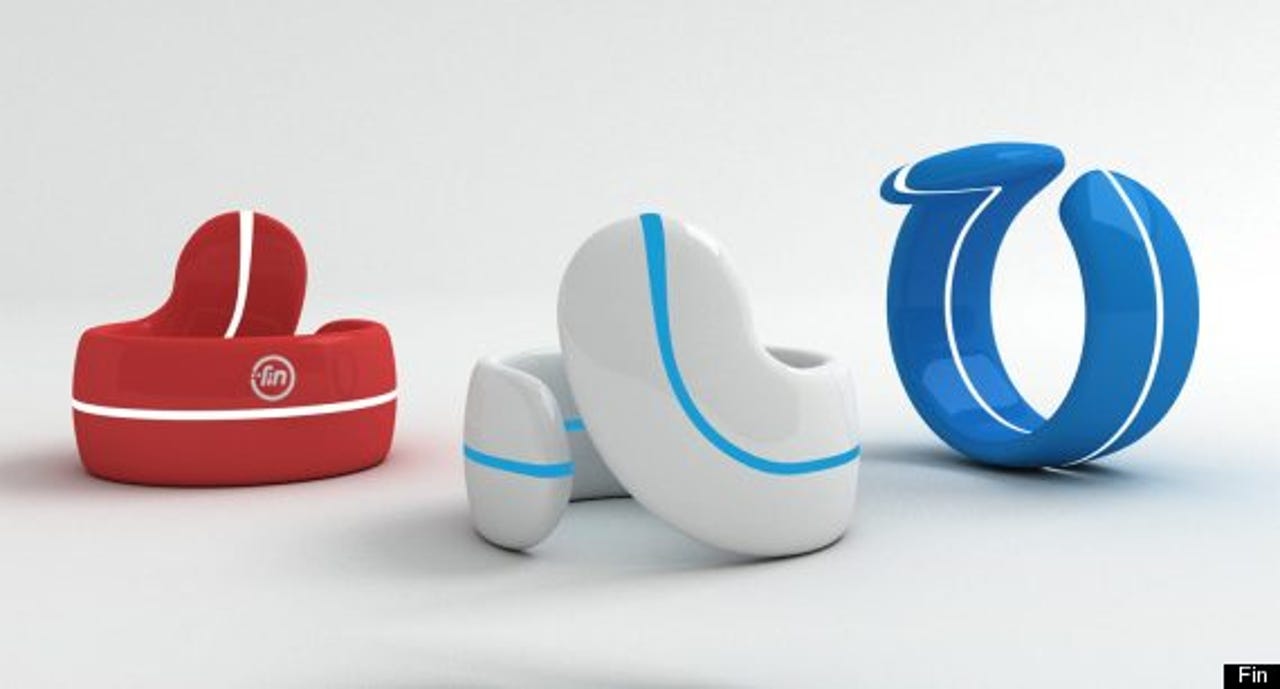Fin's bluetooth ring: A wearable that could make Gollum happy

Alright, so this ring doesn't make you instantly disappear, but it does do several cool things that may just spark a little glimmer of satisfaction in Gollum's eyes, and a whole lot more if he decided to become a venture capitalist or an investor in wearable devices today.

Fin is a ring that goes around your thumb. It has an optical sensor hidden inside with the unique ability to recognize each segment of every finger on your hand. It is able to detect swipes and taps across your hand and then send the translated command using Bluetooth to another device, which could be your television, garage door, or smartphone.
In other words, with a quick light tough of a finger segment by your thumb, you can shut things off or on, change your television channel, adjust the thermostat in your house, switch on your coffee machine, or pay your credit card bill (since your fingers can also double as a numeric keypad). Apparently, the device can last for a month on just one charge if it's used for eight hours per day, and you don't have to wave your arms about like a lunatic to operate it like some other touchless devices.
If the device seems promising, the story of its inception is extraordinary for a country that isn't used to churning out product hits, never mind from unheralded and little-known corners of India. Fin was dreamed up by Rohildev, who grew up in the obscure town of Mamallapuram in the coastal state of Kerala and graduated from the somewhat unknown Kathir College of Engineering in the city of Coimbatore in Tamil Nadu. He started Fin initially as a project in his final year of engineering, and it then morphed into a company, RHL Vision, the Startup Village in Kochi.
An effort to raise $100,000 on crowd-funding site Indiegogo was so successful that it generated twice that amount from 1,600 people globally who pre-ordered the device. RHL went on to star in the Pioneers Festival, one of Europe's largest startup events held in Vienna last year, where it was one of 50 global companies, and was a standout at the TechCrunch CES Hardware Battlefield in Las Vegas this year.
In the world of Internet of things (IoT), where all devices are connected to each other, Fin could be the answer to how we jumpstart this brave new era.
There are those, however, who think that rings are more hype than anything else.
Naysayers
This article in Gizmodo reported that a few ring devices (in addition to Fin), such as the ingeniously named "Smarty Ring" and the equally clever "Ring" have already entered the market and haven't really done much. A wearables designer in the article said the basic problem is that there's a whole flood of wearables entering our world, and not all of them are particularly useful — in fact, the smaller the device, the less helpful it apparently tends to be. Some of them are simply force-fitted into the world of wearables, and the ring is one of them.
There are other issues that the piece rightly brings up: For instance, what materials are Fin and its ilk made up of? Most of them are in the beta stage, and for them to be available to consumers, they need to convince the powers that be that they won't cause harm in any way to the skins of users. But, more than that, they still have to convince people that a ring is better than a phone when it comes to sheer practicality in communicating with other devices.
That's not to say that a ring-like wearable does not have a place in this world. It could transform the lives of the visually impaired, for example, where simple taps can bring the world to their fingers and control things like wheelchairs, emergency numbers, and phone diallers.
The bigger question, however, is what will happen to wearables in a world where voice-activated response systems are already on the rise?